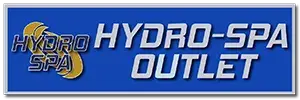When addressing the complexities of hot tub repair, a fundamental understanding of its key components is indispensable. The heart of a hot tub’s functionality lies in its pump and heater, both of which manage the circulation and temperature of the water, respectively. The control system, often underestimated, serves as the nerve center, orchestrating the operations of heating, filtration, and jet function. Filters, too, play a pivotal role in maintaining water clarity and hygiene by trapping debris and contaminants. As we unpack these components further, one begins to appreciate the nuanced interplay that ensures a seamless hot tub experience. What remains intriguing, however, is how even minor malfunctions in this ecosystem can lead to significant operational challenges.
Key Components Explained
Understanding the key components of a hot tub is essential for both maintenance and repair.
Integral to its operation is the pump, which circulates water through the system, ensuring efficient heating and filtration.
The heater, another crucial component, maintains the water at your desired temperature, providing a soothing experience.
Additionally, the control system serves as the brain of the hot tub, with settings to adjust temperature, jet pressure, and lighting, allowing users to customize their soaking experience to personal preferences.
Filters play a pivotal role in maintaining water clarity and hygiene by trapping debris and contaminants.
Recognizing these components fosters a sense of ownership and community among hot tub enthusiasts, as shared knowledge enhances collective enjoyment and upkeep.
Troubleshooting Common Issues
Building on the foundation of knowing your hot tub’s key components, addressing common operational issues becomes the next step in ensuring its longevity and performance.
When a hot tub fails to heat properly, check the thermostat and high-limit switch for functionality. Calibration issues often cause heating discrepancies.
If water flow is restricted, inspect the pumps and filters. Clogged filters or malfunctioning pumps can severely impair circulation.
For persistent leaks, examine the seals and connections around the pump and heater. Silicone or rubber gaskets may require replacement if they show signs of deterioration.
Electrical faults, indicated by erratic control panel displays or non-responsive jets, typically necessitate a look at wiring connections and the integrity of circuit boards. A professional assessment is recommended for complex electrical problems.
Maintenance Tips and Tricks
Regular maintenance is essential for ensuring the optimal performance and longevity of your hot tub. By adhering to a structured care regimen, you can prevent the majority of common issues that may arise, ensuring a safe and enjoyable experience. Here are crucial maintenance tips:
– Filter Cleaning: Clean or replace filters every 1-3 months depending on usage to maintain clear, clean water and reduce strain on the pump.
– Water Chemistry: Regularly test and adjust the pH, alkalinity, and sanitizer levels to prevent corrosion and scaling.
– Cover Care: Inspect and clean your hot tub cover monthly to avoid mold and heat loss.
– System Flushes: Conduct a thorough system flush to remove build-up and contaminants from the pipes every 3-4 months.
These practices foster a sense of responsibility and community among hot tub owners, enhancing the overall hot tub experience.
In conclusion, a comprehensive understanding of the fundamental components within a hot tub—such as the pump, heater, control system, and filters—is indispensable for diagnosing and addressing common malfunctions effectively. Adherence to systematic maintenance practices not only enhances operational efficiency but also extends the lifespan of the unit. Therefore, regular engagement with the mechanics of a hot tub is imperative for maintaining its optimal functionality and ensuring a reliable, enjoyable use experience, especially when it comes to hot tub repair.
Read more:
Signs It’s Time to Replace Key Components of Your Hot Tub for Effective Hot Tub Repair
